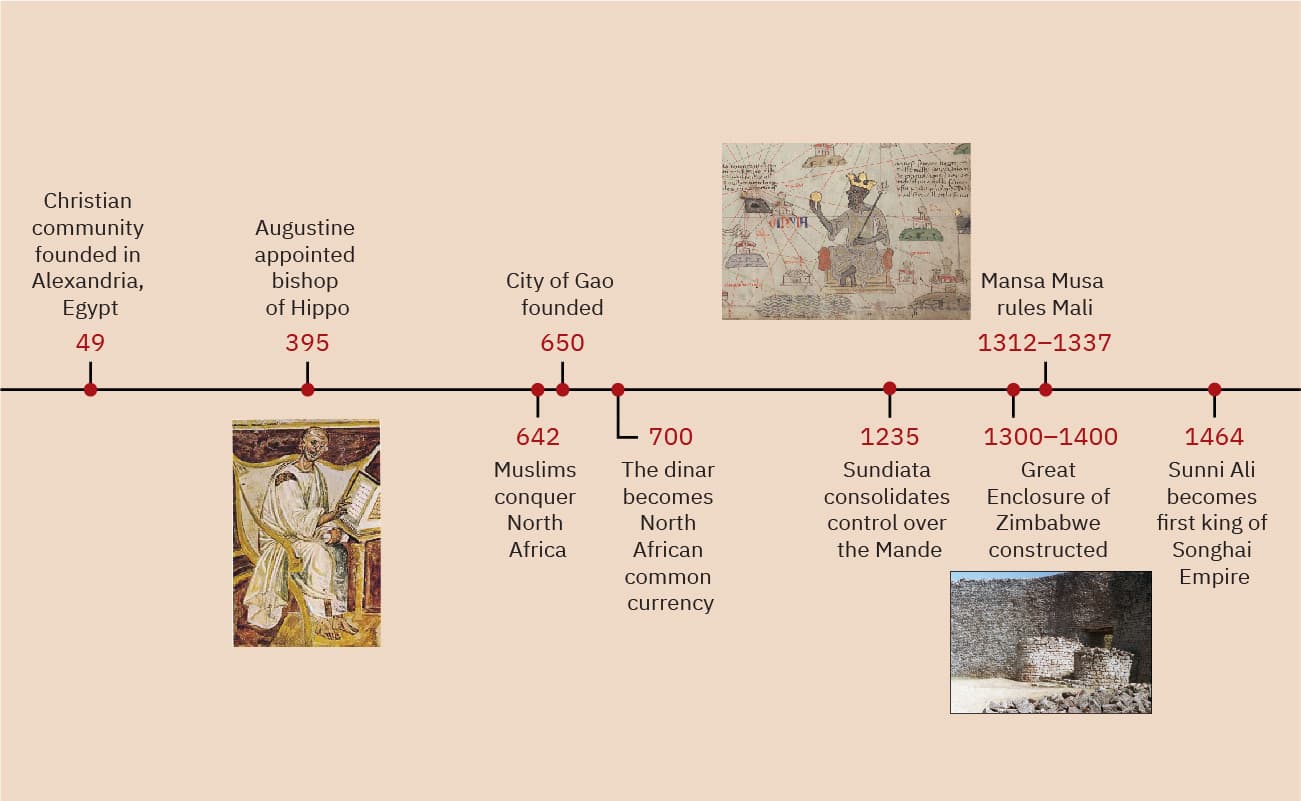Figure 15.1 This composite of images from the fourteenth-century Catalan Atlas depicts several pages of maps in the background, with a detail from the left-most page superimposed on top that shows the Malian king Mansa Musa enthroned, holding a golden scepter and orb and wearing a gold crown as symbols of his wealth and power. (credit background: modification of work “Catalan Atlas” by Bibliothèque Nationale de France/Wikimedia Commons, Public Domain; credit center: modification of work “Detail from the Catalan Atlas Sheet 6 showing Mansa Musa” by Gallica Digital Library/Wikimedia Commons, Public Domain)
“This king is the greatest of the Muslim kings of the Sudan. He rules the most extensive territory, has the most numerous army, is the bravest, richest, the most fortunate, the most victorious over his enemies, and the best able to distribute benefits.” So wrote al-Umari of the fourteenth-century Malian king Mansa Musa. An official of the Mamluk Sultanate and Mansa Musa’s contemporary, al-Umari was in a unique position to describe the great Sudanic king of West Africa and his legendary wealth. At this time, Mansa Musa’s kingdom was the latest state in the history of West Africa to exploit its strategic location astride the trans-Saharan trade routes (Figure 15.1).

Figure 15.2 (credit “395”: modification of work “Augustine Lateran” by Unknown/Wikimedia Commons, Public Domain; credit “1312–1337”: modification of work “Detail from the Catalan Atlas Sheet 6 showing Mansa Musa” by Gallica Digital Library/Wikimedia Commons, Public Domain; credit “1300–1400”: modification of work “Great Zimbabwe, Main enclosure entrance” by “damien_farrell”/Flickr, CC BY 2.0)
Figure 15.3 (credit: modification of work “World map blank shorelines” by Maciej Jaros/Wikimedia Commons, Public Domain)